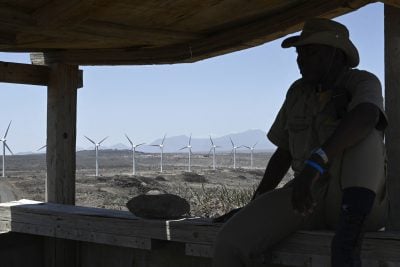South Africa has some of the lowest renewable energy tariffs in the world. What has made this possible?
Through the competitive, independent and transparent bidding process under the Independent Power Producer Procurement Programme (IPPPP), South Africa has been able to effectively leverage rapid, global technology developments and price trends, which has resulted in lower rates with every bid cycle. Strict adherence to these procurement principles has contributed to the high level of participation by developers from all over the world, and in most cases oversubscribed bid rounds have resulted in extremely competitive pricing.
This also demonstrates market confidence in our procurement process gained from years of consistently doing the right thing and doing things right.
Another important factor that has impacted on pricing in South Africa is the government support provided in relation to the obligations of the Buyer, which has been the national utility Eskom to date. Such support remains critical until we establish alternative mechanisms to reduce government liability.
It is notable that these competitive prices also reflect significant obligations on IPPs in respect of economic development commitments over the life-time of the project, which is a unique feature of South Africa’s IPP procurement model.
These include commitments around broader ownership and local participation, local content and broad-based procurement, job creation, skills development and socio-economic initiatives in the communities within which the projects are located.
Could you highlight standout energy sector PPPs?
As an independent procurement office, it would not be appropriate for us to comment on individual projects. However, the programme collectively has achieved many firsts, including, most recently concluding agreements on 2 June 2022, for the first dispatchable renewable plant to be built in Africa.
The first bid window under the IPPPP was announced in December 2011. By February 2022, 5,826 MW of electricity capacity from 87 IPP projects have already been connected to the national grid and supplying energy to Eskom.
Through the IPP projects we have attracted investment into our economy to the value of R209.6 billion. These projects have specifically prioritised jobs for youth, women and citizens from local communities.
Through the IPP Programme, 63,291 job years (the equivalent of a full time employment opportunity for one person for one year) have so far been created for South African citizens in the construction and operation of IPPs.
Total socio-economic development and skills development expenditure by operational IPPs to date is around R2.5 billion, which has contributed to skills and enterprise development, as well as health, education and social welfare initiatives in the broader communities where IPPs are located.
The cap on private power generation without a licence in SA was lifted from 1 MW to 100 MW. What is the significance of that move?
Firstly this policy signifies Government’s commitment to speedy resolution of the current energy deficit. The lifting of the cap is also a significant step towards the establishment of the electricity market reform in the country, as intended in the ERA Amendment Bill released earlier this year by the Department for public comment.
The end state envisioned by the Bill caters for three kinds of transactions, including willing buyers and willing sellers, physical bilateral transactions, and the regulated transactions.
What else is being done to increase the speed of the solar and wind roll-out?
The Minister of Mineral Resources and Energy has committed to more regular procurement bidding windows in line with the country’s Integrated Resource Plan (IRP) 2019.
Other recent legislative changes include the enabling of municipalities and large industrial consumers to purchase electricity directly from IPPs, which will further stimulate investments in renewable energy. Roof top PV in commercial and residential sector is also gaining momentum
The Minister has committed to revise the IRP to bring it in line with the current realities of the energy shortages.
The government’s Integrated Resource Plan suggests the country needs 20.6 GW of new solar and wind capacity by 2030 to meet demand. Is that manageable?
In fact if one considers some of the assumptions made then, we need much more capacity to come online by 2030 than initially anticipated.
The energy procurement plan under the IRP is the most ambitious that the country has seen in over a decade. The 13,813 MW new generation capacity that has been determined to date represents only 44% of the total 31,488 MW target for 2030 under the IRP.
Further determinations will be made in order to reach the 14,400 MW total target for wind generation and 6,000 MW target for Solar PV generation by 2030.
The procurement target is manageable, however, there are also other critical factors that need to be addressed to enable this roll-out, which include grid development investment and revitalising local manufacturing, which has been eroded as a result of the long delays in procurement and global factors such as the Covid-19 restrictions. Other government regulatory approvals such as environmental authorisations will also have to be streamlined for a faster turnaround times.
What is the role of gas IPPs in SA’s energy transition?
South Africa’s National Development Plan (NDP), the IRP and several national gas policies, including the more recent Gas Master Plan base case, all recognise the important role of gas in the energy mix, particularly as a transition fuel towards net zero.
The gas economy will also foster the creation of new job opportunities and skills required to develop, construct and manage new import, transport and consumption infrastructures as well as the tertiary sectors. South Africa’s power, industrial and transportation sectors also show great potential to contribute to a gas market development.
The IPP Office has been tasked with the design of a Gas IPP procurement programme in line with the Ministerial Determination of 3,000 MW, which is the total gas generation allocation under the IRP up to 2027. This is a complex programme involving a multitude of stakeholders and as the procurement is still at conceptual phase, we cannot yet share more details on this. The green hydrogen gas economy is also going to be a game changer in this country.
Coal still accounts for most of SA’s energy supply. What else can be done to drive down that share faster?
This is a policy matter that is not in the domain or mandate of the IPP Office. Suffice to say that South Africa’s energy planning process takes full cognisance of the country’s commitments to reduce emissions, whilst at the same time being sensitive of the massive economic and socio-economic transition implications on local economies, workers and communities.
What is also evident is that in recent past coal plant performance has been deteriorating at a much faster rate than initially planned in the IRP.
Want to continue reading? Subscribe today.
You've read all your free articles for this month! Subscribe now to enjoy full access to our content.
Digital Monthly
£8.00 / month
Receive full unlimited access to our articles, opinions, podcasts and more.
Digital Yearly
£70.00 / year
Our best value offer - save £26 and gain access to all of our digital content for an entire year!
 Sign in with Google
Sign in with Google 



